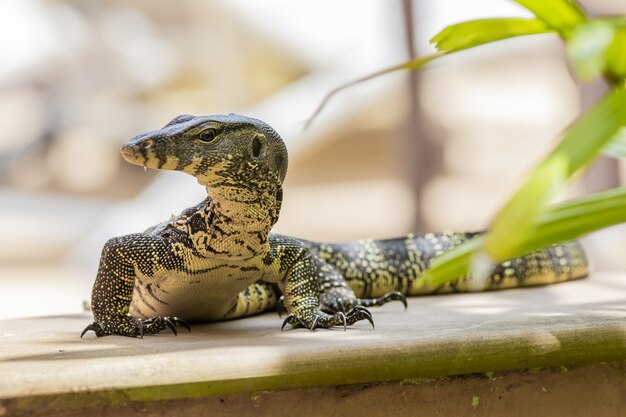

Leopard geckos are native to the rocky deserts of Afghanistan, Pakistan, and India.
Despite their name, leopard geckos are not actually related to leopards.
Leopard geckos can live up to 15-20 years in captivity.
These geckos get their name from their leopard-like spots and patterns.
Leopard geckos are solitary creatures and prefer to live alone.
They have a unique ability to drop and regenerate their tails if needed for defense.
Leopard geckos are excellent climbers and can scale vertical surfaces with ease.
These geckos have adhesive toe pads that help them grip onto various surfaces.
Leopard geckos are known for their vocalization, making chirping and barking sounds.
In the wild, they are primarily nocturnal, but in captivity they can adapt to daytime activity.
Leopard geckos are omnivorous and eat a diet consisting of both insects and smaller vertebrates.
They have a high tolerance for captivity and can thrive in a controlled environment.
Leopard geckos have excellent eyesight and can see well even in dimly lit conditions.
These geckos are known for their docile nature and can be easily handled.
Leopard geckos have a complex social hierarchy in the wild, with dominant and submissive individuals.
They have a unique ability to store fat in their tails, which they use as a source of energy during times of scarcity.
Leopard geckos have a keen sense of smell, which helps them locate food and detect predators.
They have sensitive hearing and can pick up on high-frequency sounds.
Leopard geckos have a lifespan similar to that of cats and dogs, making them long-term companions.
They are known for their ability to shed their skin in one piece.
Leopard geckos have a remarkable ability to regenerate lost limbs, including their tails.
These geckos are a popular pet choice due to their low maintenance requirements.
Leopard geckos communicate through various body language signals, including tail wagging and head bobbing.
They are known for their ability to store water in their bodies and go for long periods without drinking.
Leopard geckos have a unique defense mechanism where they can inflate themselves to appear larger.
These geckos have a variety of color morphs, including albino, lavender, and high yellow.
Leopard geckos have a keen sense of temperature and require a temperature gradient in their enclosure.
They have a gentle bite and rarely attempt to bite humans unless provoked.
Leopard geckos have a soft, velvety skin texture that makes them pleasant to touch.
These geckos are relatively resistant to diseases and parasites compared to other reptile species.
Leopard geckos are sensitive to bright light and require UVB lighting for optimal health.
They have a unique ability to change their skin color to blend in with their surroundings.
These geckos are famous for their smiling appearance, as their mouths curl upwards naturally.
Leopard geckos are highly territorial and will defend their territory from intruders.
They have a slow metabolism, which allows them to survive on a relatively low-calorie diet.
These geckos have a keen sense of balance and can walk on narrow surfaces with ease.
Leopard geckos have a unique pupil shape, resembling a vertical slit, to control the amount of light entering their eyes.
They have a distinctive tail that acts as a fat storage, communication tool, and energy reserve.
These geckos will occasionally shed their tails if they feel threatened, and a new one will grow in its place.
Leopard geckos have an efficient digestive system, allowing them to digest their prey fully.
They are known for their ability to sleep with their eyes open, which helps them stay alert to any potential danger.
These geckos are popular for their calm and relaxed nature, making them an excellent choice for beginner reptile owners.
Leopard geckos have excellent spatial awareness and can navigate their surroundings with precision.
They have a unique ability to produce a variety of vocalizations, including hissing and squeaking sounds.
These geckos are highly adaptable and can thrive in a wide range of environments, including desert, arid, and semi-arid regions.
Around the world, coffee enthusiasts enjoy Monin coffee concentrate since it is a multipurpose product. Conveniently combining…
The Importance of Choosing the Right Shower for Your Bathroom Renovating your bathroom can be…
Usain Bolt holds the record for the fastest 100-meter sprint in history.Bolt was named Sportsman…
Love is in the air... and it smells suspiciously like chocolate!Roses are red, violets are…
Life's a beach, take a picture and relax.Sun, sand, and salty kisses. That's what beach…
Hungary is home to the largest thermal water cave system in the world.The Rubik's Cube…